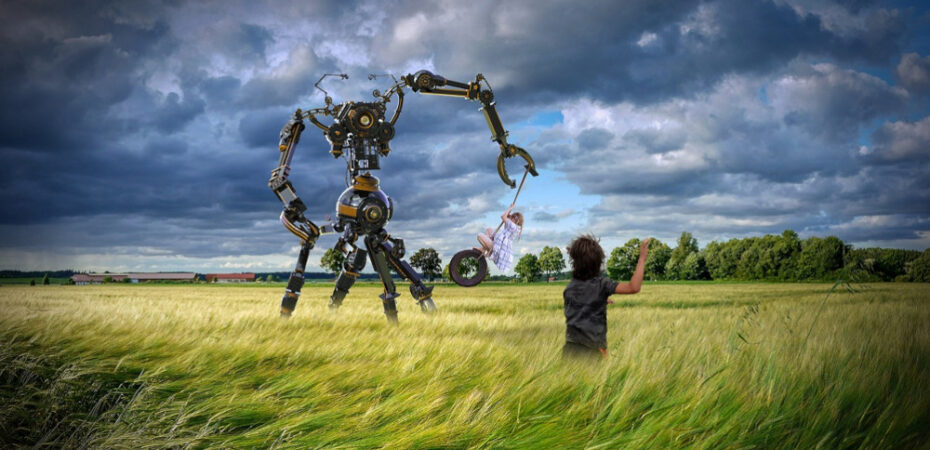
In this post, Irene Xi shares her day-to-day experience with ChatGPT and discusses how artificial intelligence is different from human intelligence. She highlights areas where the strengths of AI can be harnessed and where caution should be exercised. Irene is a postgraduate student studying Sociology and Global Change course from the School of Social and Political Science. This post belongs to the Hot topic series: Moving forward with ChatGPT.
‘It can tell you the reason for climate change but does not know what the climate is’ – This is my experience with ChatGPT. Once, I input an academic article’s name and questioned “can you find the DOI for this article” in the chat box, ChatGPT generated the wrong DOI for me. Then I corrected it by saying that “your answer is wrong, can you provide me the correct DOI”. But what ChatGPT gave me is another wrong DOI, again! Finally, I gave up asking and decided to search for the DOI by myself. I believe that many people have experienced similar situations. ChatGPT sometimes writes plausible-sounding answers, but when you investigate the details, many responses are incorrect or nonsensical.
Why does this happen? We should go back to the design of ChatGPT. As a type of generative pre-trained transformer (GPT), the development of ChatGPT is based on a large-scale feed of datasets. The great majority of textbooks, Wikipedia pages, newspapers, social media posts, and other sources are absorbed by ChatGPT first. Then, it makes predictions about which words and phrases are most likely to go together using the data. This indicates that the answers come from a succession of guesses rather than the understanding of knowledge. Just as my title said, ChatGPT can provide answers to the climate change question, but it has no idea about what is “climate” or “change.”
This learning process is comparable to experiential learners, who get knowledge from prior experience and paste past successful experiences into future actions. For instance, a cook who learns by practice might have no knowledge of what Maillard reaction is, but they know how to fry a delicious steak by mimicking previous successful experiences. Memorisation is the first step in this kind of learning. The more information someone can memorise, the more issues they should be able to solve. There is no doubt that ChatGPT is an expert in memorisation. As ChatGPT can store a limitless amount of data due to its large computing space, it can give answers to plenty of questions.
Unfortunately, not every question can be answered based on prior experiences. What ChatGPT can do is solve the problems that it has already seen in the past, but it might not be able to handle some inquiries in new domains with accuracy because its intelligence has not been updated with fresh information from the altered scenarios. In the end, machines’ intelligence is limited to the areas they are trained. Though ChatGPT might be able to give predictions to a new-domain question based on a prior dataset, the answers are highly likely to get a fact check.
Human intelligence, on the other hand, needs to be emphasised because it can put knowledge to use. A person can generalise conceptual information to address issues in unanticipated areas after they have fully grasped it. It should be admitted that only humans have the ability to learn, understand, and then use newly acquired knowledge by fusing it with some skills.
And that is the learning disparity between ChatGPT and human brains. If we rely on ChatGPT to output some intellectual work, the responses can be highly untrustworthy. And the consequences can be damaging. For instance, these erroneous results might disproportionately harm underrepresented groups and jeopardise the library’s goal of ensuring fair access to knowledge (Lund & Wang, 2023).
In that case, why can ChatGPT still cause such a stir in society? I think it is because ChatGPT is a milestone in natural language processing (NLP). This language model has the astonishing ability to produce documents that resemble human language. Although not designed as a dedicated grammar checker like Grammarly or other comparable applications, ChatGPT’s strong NLP makes it possible to identify errors reliably and offer a perfect solution across many languages. My personal experience has shown that ChatGPT is effective in correcting grammar, editing writing, translating languages, and performing other helper tasks. It is really a master in language processing!
Finally, I want to say, we should first acknowledge that ChatGPT is a success in technological evolution, in a way that technologies are becoming “more human by performing more like human systems, and not necessarily by becoming physically more like human beings” (Paul, 1979, p. 30). But from my perspective, it is still early to say that machines can replace human intelligence. ChatGPT is a great tool to assist educational work, but it cannot be used to replace human beings or create intellectual answers.
References:
Lund, B. D., & Wang, T. (2023). Chatting about ChatGPT: How may AI and GPT impact academia and libraries? Library Hi Tech News., Available at SSRN: https://ssrn.com/abstract=4333415 or http://dx.doi.org/10.2139/ssrn.4333415
Paul, L. (1979). Introduction: Two different creations? In Human Reply: a Theory of the Evolution of Media. New York University.
 Irene Xi
Irene Xi
Irene Xi is a postgraduate student, currently undertaking Sociology and Global Change course at The University of Edinburgh. She earned a communication bachelor’s degree from Monash University. Also, she is a Chinese girl who is enthusiastic and interested in AI and online technologies.


